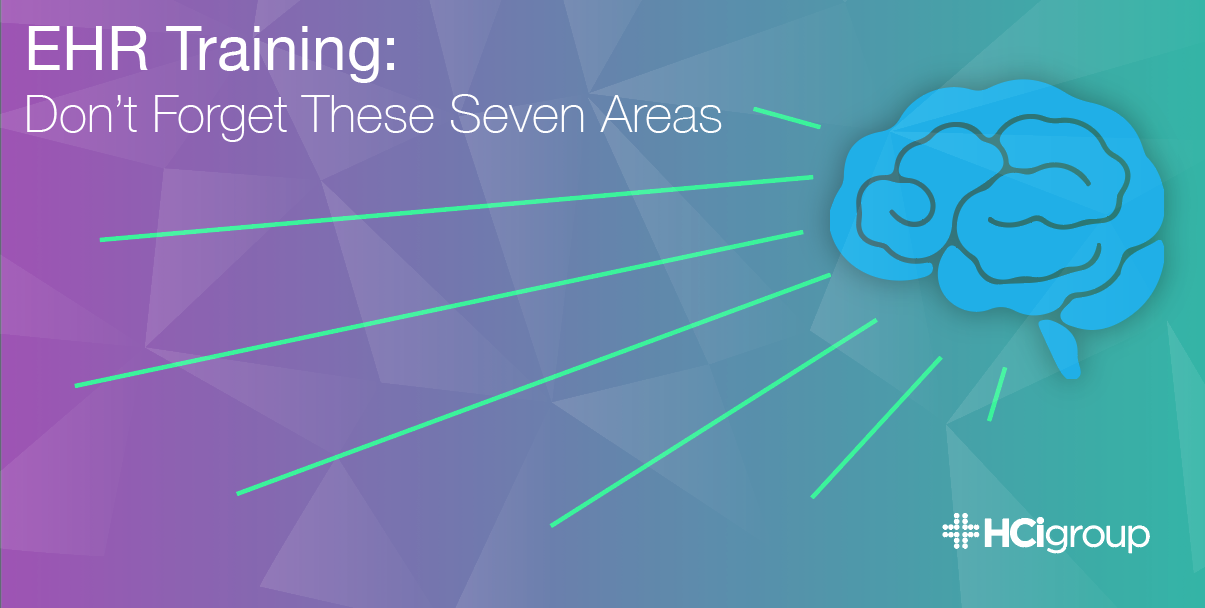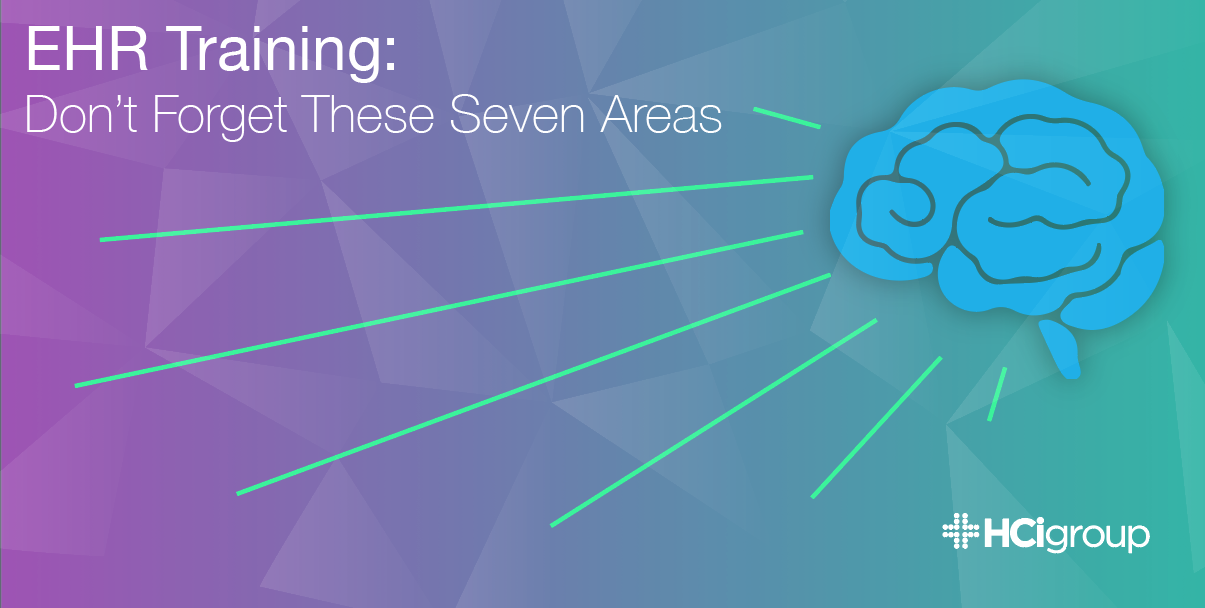EHR Training: Don't Forget These Seven Areas

 A successful EHR training program accelerates adoption, increases efficiency and improves care.
A successful EHR training program accelerates adoption, increases efficiency and improves care.
So common are the traits shared by such programs that you may know many of them already. You have probably even implemented well-known best practices like assessing computer skills, training super-users and managing staffing levels. These will help you maximize your return on your investment in your new EHR by producing benefits like those that we covered at the outset.
However, what you don’t include in your training program can be just as influential to its success as the best practices that you do incorporate. Missing one or more key training components could compromise the effectiveness of your EHR implementation. You could squander time and resources—and possibly jeopardize care—as users struggle with your new system.Position your program for success by planning for these “often forgotten” areas in EHR training...

1) Room Reservations Before Go-Live
Many project teams will want large classrooms for cut-over, appointment conversion and soft-go-live activities. Your training manager should anticipate those needs ahead of time and schedule classes with those needs in mind. It is always easier to open up a classroom later on if it is not needed for these events.
2) “Just-In-Time EHR Training”
You will want to run reports to see who has not taken training before go-live. It is very important to set up a contingency plan with the most popular classes offered the week of go-live so that anybody on that list can attend. It is always helpful to have trainers and classrooms blocked for these classes even before the end-user knows the need is there. Don’t publish these classes, but have them available to publish when the need arises so that you can avoid last-minute scrambling for finding rooms and trainers.
3) On-The-Job Learning
Even the best trainers will not educate all users on everything they need to know. Nor will even your sharpest employee retain all of their training. RevenueXL’s tips for EHR staff training include teaching the most common functions in depth in a training environment and then providing instructions and ongoing support as staff integrates the EHR into their day.
4) Relevance of EHR Training
Organizations often forget that not everyone needs to know everything when it comes to training (but they often receive such unnecessary training anyway). This reduces the amount of relevant information that they can retain and prevents trainers from imparting more valuable lessons. Increase the effectiveness of your program by training employees only on areas they’re going to use.
5) Online Resources
Relying on trainers and super-users to do it all themselves is unrealistic. Employees should know where and how to access supplemental training materials so that they can quickly get assistance when helpers are not available.
Create a repository that is easy to access and search so that users can get the curriculum and tip sheets that they need. Also, provide employees access to any online resources that your EHR vendor may offer, like training videos, tutorials or user forums.
6) Realistic and Reliable EHR Training Environment
Training should mirror reality as closely as possible. Organizations often fail to prepare their teams properly because users do not experience what they would on the floor.
The training environment (meaning the fake electronic record that is used for training) should have realistic patients, patient scenarios and real-life situations that the end user will need to figure out how to navigate through the system to complete. It should mirror what they will see at go-live; this is important. Have your training manager work with the analyst manager to ensure that updates make it into the training environments as well.
Failing to test training equipment is another area that your organization can’t overlook. Every desktop, keyboard and mouse should work properly before training so that your users can focus on learning from your trainers instead of fixing technical problems.
7) Forgotten User Groups
Volunteers and students require special training considerations because of how they support your organization. But, you probably have not considered their particular training needs while planning your program. Students can cycle through your organization quickly. Consider how you may be able to start their training through their educational institutions, such as remote training sessions or with help from faculty who have been trained as trainers. Tailor training to each student’s specific role within your organization so that they can perform their duties properly. Ensure that volunteers can also access your new EHR system as needed.
Proper planning is key to accelerating adoption, increasing efficiency and improving care through a successful EHR training program. Position your program for success by planning for these “often forgotten” areas.

